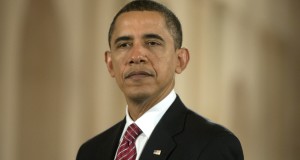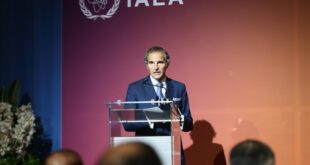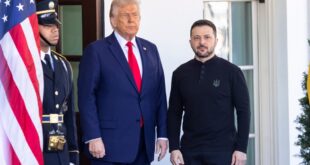As Secretary of State John Kerry seriously pursues a Russian-American-United Nations administered cease-fire and humanitarian relief effort as the first concrete step towards implementing the Geneva agreement, the Pentagon is preparing for an eventual NATO intervention in Syria to defeat the Islamic State. This seemingly paradoxical approach to the now five-year long Syrian war is typical of the Obama Administration’s zig-zag approach. In fact, the Pentagon renewed look at a direct NATO multinational role in Syria is as much in anticipation of the next US Administration taking a much harder line towards Russia’s new muscular role in the world, as it is a reflection of any shift in Obama White House thinking about a Syrian endgame.
President Obama has made it clear that there will be no American “boots on the ground” in Syria so long as he is in the White House. This is the one consistent feature of the Administration’s policy towards the war against ISIL. The White House has even been hesitant to seriously expand the number of US Special Forces in Syria, beyond the 50 or so who are now operating in country, embedded with the Syrian Democratic Forces, comprised largely of Kurds from the YPG. For every Special Force “boot on the ground” deployed in Syria, a support apparatus of ten other SF personnel is required. Fifty translates into 550 personnel, and for President Obama, this is already taxing the limit of what he is prepared to deploy.
For the foreseeable near-term, the US will escalate bombings, based on target intelligence; and will put most of its effort into the SDF support, which includes Kurds and fighters from several Sunni tribes who have been trained by the CIA.
Under this program, the US military has greatly increased its “deconfliction” coordination with the Russian forces inside Syria. The initial rationale for this daily coordination was to make sure that Russian bombings do not target SDF forces operating with US Special Forces advisers. That military-to-military engagement is part of an expanded military-diplomatic cooperation between Washington and Moscow, which has many regional American allies up in arms.
When Saudi Arabia and Turkey, along with the UAE, offered to send their own troops into battle against the Islamic State inside Syria, the Administration played a double game—officially welcoming the offer, while simultaneously rejecting the premise: That the US would also have a greater ground force involvement against the Islamic State. The Pentagon viewed the offer as a ploy, even as Secretary of Defense Ashton Carter publicly praised the quality of the UAE Special Forces operations in Yemen, and welcomed the idea of “embedding” those forces in vetted Syrian rebel units.
President Obama has also added another complication to the already confused and contradictory American role in Syria. In recent Congressional testimony, Brett McGurk, an Obama insider, who is now the special State Department envoy for Syria and Iraq, acknowledged that the Administration now believes that Syrian President Bashar Assad must be allowed to remain in power for the foreseeable future. While he did not give any precise deadline for Assad’s departure, other officials have conceded that Assad could remain in power for as long as two more years.
Under the zig-zag US policy, there is one area where the Administration claims to be making significant progress. That is the cutting off of ISIL funds. While Pentagon officials say that the Islamic State has lost 40 percent of its territory in Iraq and Syria, CIA Deputy Director David Cohen, who gave an unusual series of interviews with WTOP radio and Public Television earlier this month, emphasized that the CIA and other US intelligence agencies have been able to develop more precise intelligence on ISIL’s sources of funding. And this, rather than the territory it controls, is a key measure of the progress. An estimated 75 percent of the oil and gas infrastructure in ISIL-held areas has now been destroyed, through a combination of American and Russian targeted bombings. This includes an estimated 1,200 Islamic State trucks, most of which are large oil tankers. As the revenue stream shrinks, the Islamic State has fallen behind by several weeks in payroll, and in some ISIL-controlled areas, including Raqqa, local residents can pay $500 for the right to leave. These, according to Cohen and other US officials, are better indications of the slow, but steady progress being made against the Islamic State.
Kerry and other American officials dealing with the Russians have been delivering a consistent message: The next administration, regardless of who is elected President and which party retains control over the US Congress, will take a much harder line against Russian aggression, including in the Middle East. Unless Russia provably cooperates now in implementing the cease-fire and the other measures spelled out in the most recent Geneva agreement and the United Nations Security Council resolution that flowed from that agreement, there will be NATO forces sent into the Iraq-Syria combat zone at some future point, and that could drag Russia into another quagmire like Afghanistan.
For now, there are deep splits in Europe over a direct NATO role in Syria, but the over-riding fear of another massive wave of war refugees into Europe, which is still in the throes of an economic crisis, is expected to tilt the balance in favor of an accelerated end to the Syria war, whether through diplomacy or NATO military action—including the deployment of ground forces.
The path to NATO engagement is being paved, even as the cease-fire efforts continue, largely led by the US-Russia-UN troika. The United Nations on Feb. 22 informed Syrian President Assad that his regime has been bombing hospitals in rebel held areas, particularly in and around Aleppo, an implicit threat to bring him before the World Court of Justice in The Hague on charges of crimes against humanity and war crimes.
Whether this is another case of United Nations hollow threats or is a serious matter remains to be seen. But the intent is clear: Assad’s days in power are numbered—whether they are numbered in weeks or months or even several years. And unless he cooperates in a genuine cease-fire and the UN mandated transition, there will be no hiding place for him and his inner circle.
This is small consolation to the rebel fighters and their Saudi and Turkish and Qatari backers, who see President Obama increasingly as a pawn in Russian President Vladimir Putin’s power play. But this is where things stand as of the Feb. 22 joint announcement by Kerry and Russian Foreign Minister Sergei Lavrov that a second deal has been reached to implement the Geneva plan.
 Geostrategic Media Political Commentary, Analysis, Security, Defense
Geostrategic Media Political Commentary, Analysis, Security, Defense





